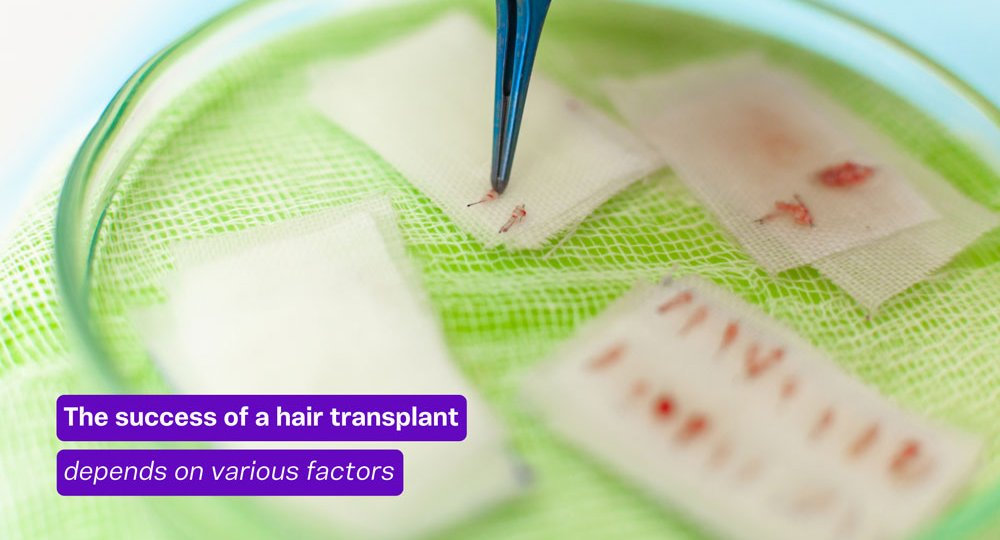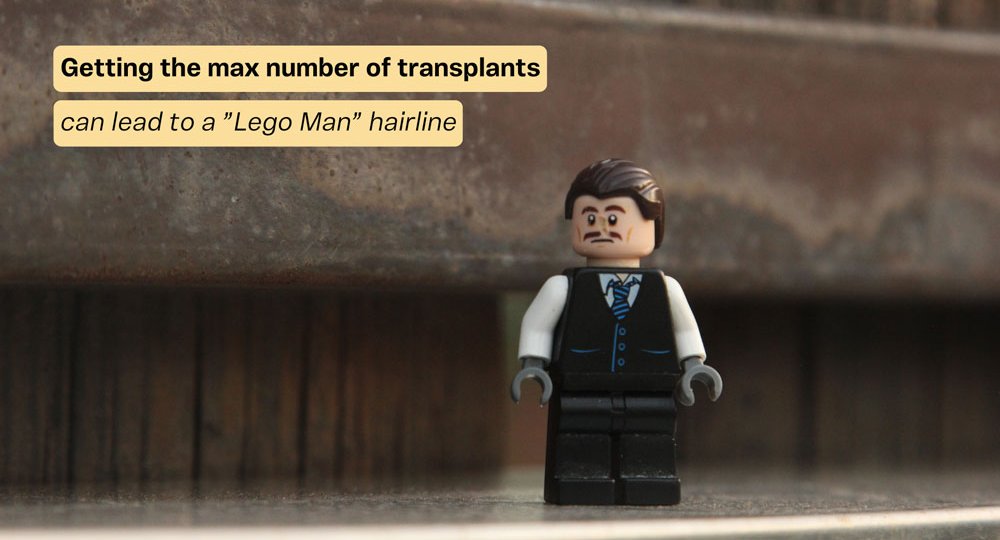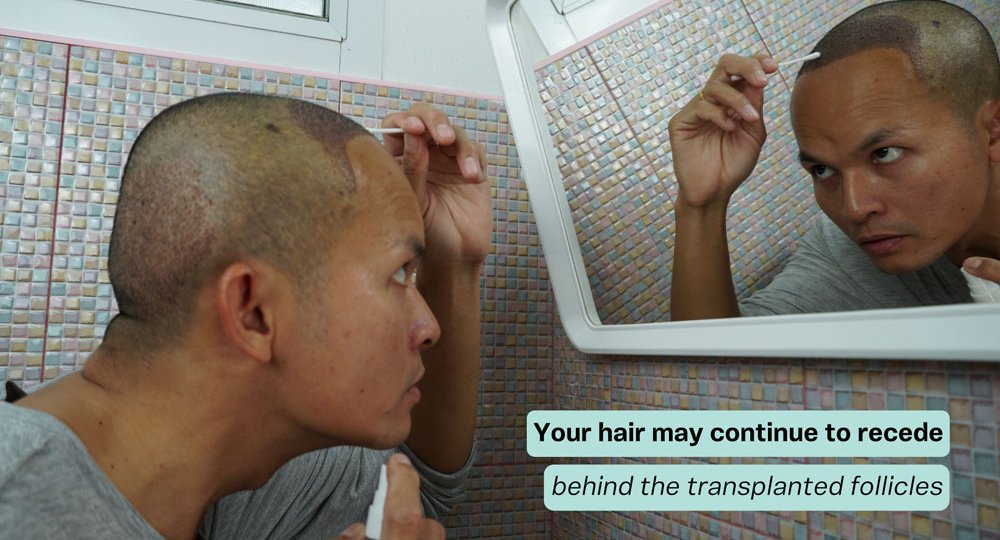What you need to know
More and more men are heading to countries like Turkey and Thailand for hair transplant surgeries. But what does a hair transplant cost, is it worth it, and will a hair transplant be a good option for you?
In this article we look at all the positives and negatives including what you should know before and after your hair transplant surgery.

Hair transplant basics
Hair transplants involve the surgical transfer of hair follicles from a donor site to an area of balding or thinning. This procedure aims to provide a natural-looking, permanent solution to hair loss.
In hair transplant procedures, the transplanted hair typically comes from the patient’s own scalp, specifically from areas that are resistant to hair loss. These areas are known as the “donor site.” The most common donor site is the back and sides of the scalp, where hair follicles are genetically programmed to be less sensitive to the hormone dihydrotestosterone (DHT), which is a major contributor to hair loss.
There are two primary methods used for harvesting hair follicles from the donor site:
Follicular Unit Transplantation (FUT)
In FUT, a strip of skin containing hair follicles is surgically removed from the donor area. The strip is then dissected into individual follicular units under a microscope. Each follicular unit typically contains one to four hairs. The individual follicular units are then transplanted into the recipient site.
Follicular Unit Extraction (FUE)
FUE is a less invasive technique compared to FUT where individual follicular units are extracted directly from the donor area using a small, punch-like instrument.
This method does not involve a linear incision and leaves tiny, dot-like scars that can be less noticeable than those from FUT.
FUE allows for a more dispersed extraction of hair follicles, giving a “shaved” appearance to the donor area.
Once the hair follicles are extracted, they are implanted into the recipient area, where the patient is experiencing hair loss. The goal is to create a natural-looking distribution and density of hair in the balding or thinning areas.
It’s important to note that the success of a hair transplant depends on various factors, including the skill of the surgeon, the quality of the donor hair, and the overall health of the patient’s scalp.
Additionally, ongoing pharmaceutical treatments are usually needed to maintain the health of existing hair and prevent continued hair loss.

Hair transplant benefits
Hair transplants can be a good choice for those not able to regrow their hair naturally. By redistributing follicles to balding areas you can quickly change the appearance of your hairline. The main reasons you may want to consider a hair transplant are:
A permanent fix (sort of):
One of the primary advantages of a hair transplant is that the implanted hair is likely to be more resistant to the hair loss hormone DHT. But while the implanted hairs are more durable, if you have a progressive hair loss condition such as male pattern baldness, the rest of your hair will continue to recede without ongoing treatment.
Improved procedures:
“Hair plugs” with their doll-like appearance are pretty much a thing of the past. When performed by a skilled surgeon, modern FUE hair transplants can yield natural-looking results. For this reason, it’s always recommended that you invest in a well credentialed surgeon.
Hair transplants risks
Hair transplants aren’t a good option for everyone. Much like other cosmetic procedures such as liposuction, the procedure can give quick results, but it doesn’t address the underlying conditions.
This means that without any other treatment or support, the patient may soon find themselves in the same position.
Before going ahead with your hair transplant, here’s the main things you should know:
Less effective for genetic / male pattern hair loss:
Hair transplants are less effective treating the earlier stages of progressive genetic hair loss conditions such as male pattern hair loss or androgenetic alopecia. While the transplanted follicles are resistant to the effects of DHT, the rest of your hair may continue to recede without ongoing treatment.
Limited donor hair:
A transplant doesn’t give you extra hairs, it just redistributes your existing follicles. So the success of a hair transplant depends on the availability of sufficient donor hair. In cases of extensive hair loss, there might not be enough donor hair to achieve the desired coverage.
Lego man hairline:
Most clinics charge per follicle but you should be aware of practitioners who push you to buy the maximum number of transplanted hairs. This can often lead to an unnatural, “Lego man” hairline that sits too low.
Getting a transplant too early:
If you get a hair transplant too young, before the extent of your hair loss condition can be known, your surgery may not to take your future hair loss into account. This may result in balding continuing around the patches of transplanted hair.
You might not need a transplant:
It’s possible your hair follicles are merely in a resting phase. If this is the case, you may be able to regrow your hair without surgery. Book a free hair loss consultation and our consultants can assess your condition to let you know what’s possible.
There’s no going back:
The main benefit of a hair transplant is also one of the biggest risks. As transplanted hairs are in place permanently, this means for better or for worse, you’re stuck with the results. It also means you will need to maintain your remaining natural hair if you want to avoid continued thinning.

Hair transplant costs
The cost of a hair transplant can range from around $5,000 to $30,000, dependent on the number of follicles you are having transplanted. But even in places like Turkey or Thailand the costs are still expensive compared to other treatment options. When you factor in the likelihood of the ongoing care required after your hair transplant, it’s usually more cost effective to try a hair regrowth program first.
Added risks of surgery overseas
While the appeal of combining an overseas vacation with a cosmetic procedure is clear, there are some additional risks you should be aware of.
Lack of regulation and oversight:
Many countries like Turkey and Thailand have different regulatory standards for cosmetic procedures. This may lead to variations in the quality of healthcare facilities, qualifications of practitioners, and adherence to safety protocols.
Inexperienced practitioners:
Sometimes the lower cost of procedures abroad can be attributed to the lower costs of less experienced surgeons.
Limited recourse in case of complications:
If complications arise from a cosmetic procedure performed overseas, seeking corrective measures or follow-up care may be challenging. Legal and regulatory frameworks may differ, limiting the recourse available to patients facing issues post-surgery.
Is a hair transplant right for you?
Many people have had successful cosmetic procedures, both here and overseas. If this is something you’d like to pursue, you just need to do your homework and make sure it will be a good option for your hair loss condition.
Before and after your hair transplant, Ashley & Martin is here to provide the support you need.
Before your transplant we offer free consultations where we can assess your condition and confirm that you are a good candidate for the procedure. After your transplant, we’ll give you everything you need to maintain your new hairline.
